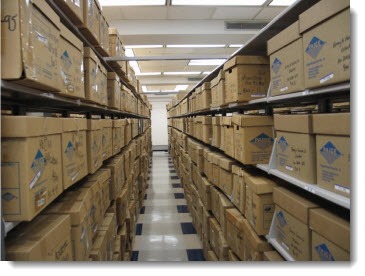
If you’re in a small business using Outlook, your mailbox has probably been growing exponentially for years. Your gut instinct is to keep everything forever but Outlook is slowing down and your IT support people seem upset because maintaining Outlook becomes more difficult as your mailbox grows, for all kinds of reasons.
Chances are that you’re starting to ask about archiving your mail.
Here’s a primer on some of the different meanings of the term “archive” for Outlook users, starting with a history lesson about AutoArchive and Archive.PST files. In the next article I’ll give you a brief look at options for Office 365 mailboxes and some of the other possibilities.
Outlook .PST archives
Traditionally Outlook mailboxes were stored in an “Outlook Data File” – a file stored on your local computer with a .PST extension. There were (and are) size limits on .PST files and they were notoriously fragile, prone to data corruption that would necessitate the use of the dreaded ScanPST tool, known for taking hours to run and for losing data during the repair process. Not to mention that .PST files were designed to be opened only from the workstation by your desk, not from the company server, which meant they mostly were not backed up.
By default, Outlook 2003 and 2007 were set up to create separate Archive.PST files with archives of old items removed from the main .PST file. In theory the archives would have less activity and therefore be less likely to be corrupted in day-to-day use of Outlook, and Outlook would be speedier because the main mailbox was kept streamlined.
Microsoft Small Business Server 2003 introduced Exchange to many small offices, providing a central mail server that did not require individual .PST files for each mailbox. In those early days, neither Exchange or Outlook did well with large mailboxes so mailbox sizes were strictly limited. (The original limit for an SBS 2003/Exchange 2003 mailbox was 200Mb, which some people are now adding to their mailbox in a single day.) For years after Exchange became commonplace, Outlook was still set to auto-archive old messages to a local Archive.PST file.
The process was not well understood and seldom explained to Outlook users. More employees began to open their mailboxes on several computers – at the office and on a notebook or at home – which led to Archive.PST files scattered at different locations with different archived data in each one. Theoretically .PST files could have identifying information embedded in them (separate from the file name) and they could be kept neatly organized, but I’m not sure I’ve ever seen that done.
For the first time, AutoArchive is not enabled by default in Outlook 2010. Both Outlook and Exchange are rock-solid with reasonably large mailboxes, and the .PST format is far stronger and more resilient than it was eight years ago. Basic Office 365 Exchange mailboxes are 25Gb and the default size limit for an Outlook 2010 .PST file is 50Gb, increased from 20Gb in previous versions of Outlook. The extra space and good performance have given us a quiet period with fewer headaches from errant Archive.PST files.
Now we’re approaching new practical limits. Even the most technophobic office has likely been using email for business communications for five or ten years. Many businesses exchange drafts of documents by email, each trip generating another sizable attachment to be stored in both sender’s and recipients’ mailboxes. Some businesses think it’s a good idea to let their new high-speed floor-standing copier/scanner send scans around the office by email. Mailboxes are exploding.
We’re being forced back to the concept of archiving. Outlook may not crash if your Exchange mailbox is 10Gb or 20Gb but working with it is inordinately time-consuming if anything happens to it.
- Example: Setting up a new computer might only take an hour but it might take 3-4 days to fill up your Outlook mailbox over a DSL connection.
- Example: Outlook slows down dramatically if your Inbox folder (the main folder, not the subfolders) has a large number of items in it. Four days ago I moved 15,000 messages from an Inbox to a subfolder in Outlook 2007. The process only took a few minutes on the local computer but I’m still waiting for the changes to be synced to the online Exchange Server. Outlook is essentially unusable in the meantime.
- Example: repairs to an onsite Exchange Server will take many, many hours if a moderately large database needs repairs and your business only has a single server (like most very small businesses running Small Business Server). Meanwhile the mail system is down, much to the consternation of the partner in the corner office.
Fortunately we don’t have to go back to Archive.PST files. Microsoft has built powerful new archive tools into Exchange 2010, and has made them available to very small businesses with Office 365. I’ll tell you about those in the next article.

Trackbacks/Pingbacks